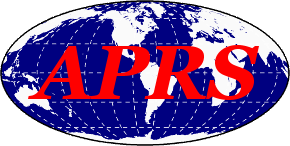Likely issues with APRS A Letter to HAM Assoc. of Mesquite

by kb5jbv
I know this is a little self serving but I think there are some good points in this information.
Please stay tuned for the opinion segment at the end of this email.
The idea of a Digi on the tower is something we put to bed a long time ago. the problem with packet is it has very unusual characteristics. Packet is relay nasty when using equipment that is perfectly aligned with the audio levels properly set and can tear other communications that are reasonable close in frequency and proximity. When I say frequency I am talking about a couple of megahertz not kilohertz. When say proximity we’re talking miles not feet. A good example is back when we were doing NTS locally on Packet Lynn Secules had a real problem with packet burst on the repeater output frequency coming over his handheld with a rubber duck antenna inside his home. The signal was not coming through the repeater. The closest Packet station to him at the time was KD6FWD running about five watts two or three miles away.
So no matter how well aligned and shielded the equipment is the chance of causing interference and/or desense to other equipment on the tower is extremely high.
Now since every APRS station is in theory a Digi your coverage follows the station. When mobiles move into say to Seagoville
you have Digi’s in Seagoville.
APRS works using a brute force approach to get the message through. Instead of sending a packet and waiting for an acknowledgment packet. APRS sends a packet without regard for an acknowledgment this way it circumvents the direct connect nature of Packet and allows multiple stations to receive and use the information in each packet. In standard Packet this in known as UNPROTO operation. So APRS Burst a packet that is picked up by relay and wide digi’s. Like i said APRS does not use the ACK portion of Packet instead packets are sent multiple times in a decaying sequence. So it looks kind looks like.
Station A >> relay >> relay >> wide >> relay >> Gateway
packet >> 1 min >> packet >> 2min >> packet >> 3 min >> packet>> …..
This is kind of simplified but you get the idea.
This is why the APRS frequency sounds congested. Channel loading is a problem and can happen very quickly and easily. There ways to make this less of a problem but it is still something that can happen very rapidly.
Since every unit is a digi the rule for fixed digi’s is lower is better. 20 to 50 feet. Lower power is better also. Since you are depending mostly on capture effect to get the signal through lower power and more stations is better. If you really want a digi in a higher place the tower at the City of Mesquite service center would by better.
144.390 isn’t really as congested as it sounds. Moving to a different frequency comes with it’s own set of challenges. 144.91 to 145.09 by gentleman’s agreement are the Packet frequencies for other purposes. PBBS, Rose nodes, Winlink, DX Clusters and so forth. The experimental portion for two meters just below the satellite band could be used but then you will have to have gateways if you want it piped into the Internet. For local use it would probably be best to stick with 144.91. The infrastructure is already in place.
Let me throw the dual purpose Digi in here. The main problem with a general or dual purpose digi is that it would be disastrous on the APRS frequency. Connected Packet stations would ingore the APRS stations and create twice the channel loading due to packet collisions. If it was setup on one of the standard Packet frequencies it would not be catastrophic but it would cause undue interference and increase channel loading due to retries and collisions.
I think I covered everything. If I missed anything let me know. If you have anymore questions let me know.
And with That:
—————————————Opinion Alert —————————————-
Whoever brought this up again to the Fire Department and the Rotary Club has to be out of there mind. I understand five or six years ago it was brought up by Rob Ashmore but APRS was still popular at that time. APRS has been dieing a slow death for the last ten years. It has only been a year or so since Bob W4APR released a couple of articles apologizing for APRS because he feels it was a mistake. If instituted as he intended it would have worked. APRS was never intended to be a poor mans LOJACK.
APRS has made no technical progress since it first came out back around 1995 and folks like Pete Lovell just can’t let go. The manufacturer have made a lot of money of the Amateur Radio community with radios and trackers that are only useful for APRS, The radios with built in TNC’s won’t even run AX.25 in connected mode without an external TNC attached to it. There are so many problems with this technology and now someone has offered it to our customer (the City of Mesquite) and it is just one more thing to make us look bad in their eyes. By the way did I tell you I am a digital enthusiast and I do not own a single piece of APRS specific equipment or software?
—————————————- End Of Opinion —————————————–
Glossary - See Glossary for terms used on the show.
Read More About Resonant Frequency: The Amateur Radio Podcast At www.rfpodcast.info
Contact Info For Richard KB5JBV: Website: www.rfpodcast.info Email: kb5jbv@gmail.com Youtube: https://www.youtube.com/c/RichardBaileyKB5JBV FaceBook: www.facebook.com/groups/resonantfrequency/ Twitter: www.twitter.com/kb5jbv MeWE: mewe.com/i/richardbailey31 Tumblr https://www.tumblr.com/settings/blog/resonant-frequency-podcast Discord: https://discord.com/channels/758866379104845856/758866379104845860 Reddit: https://www.reddit.com/user/Richard_KB5JBV
